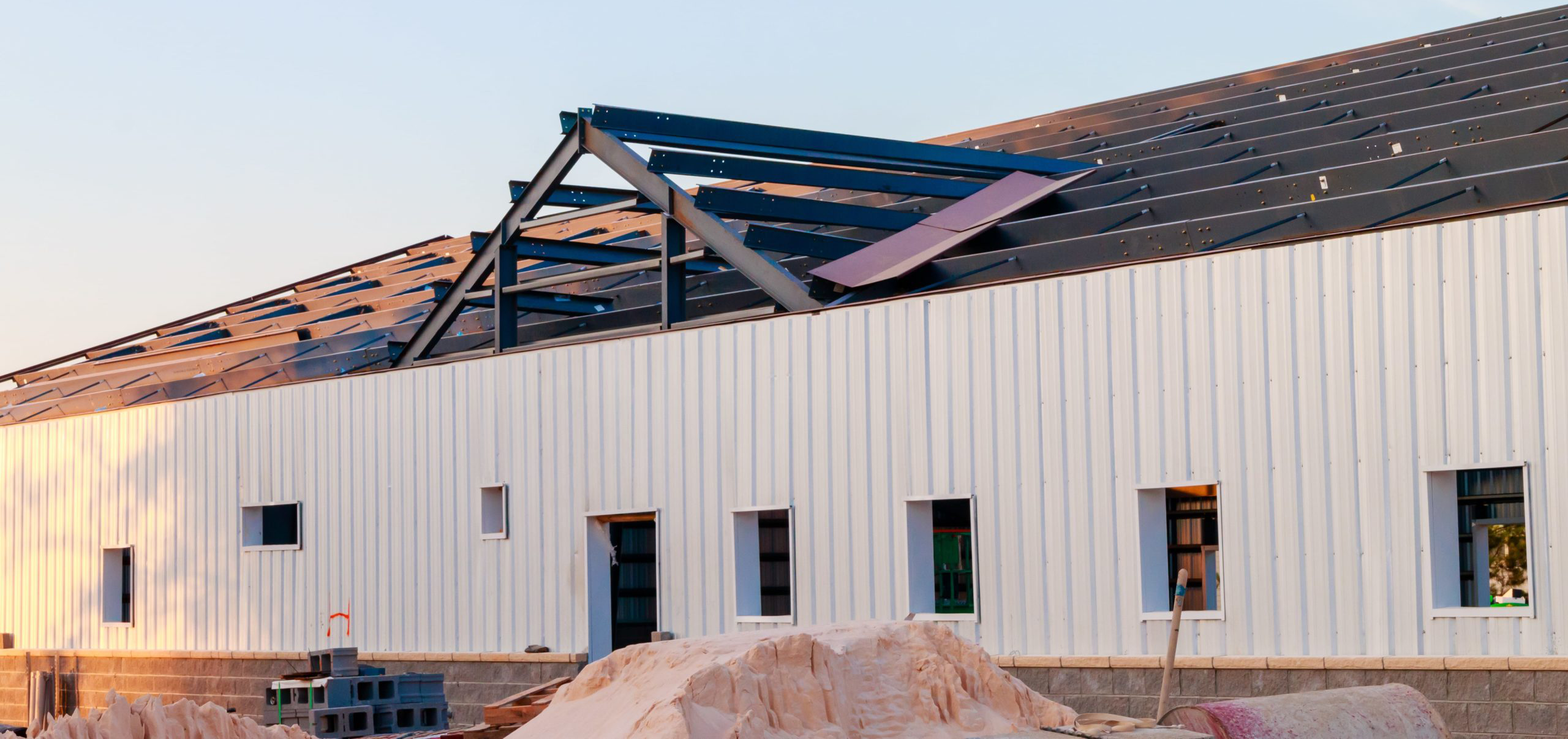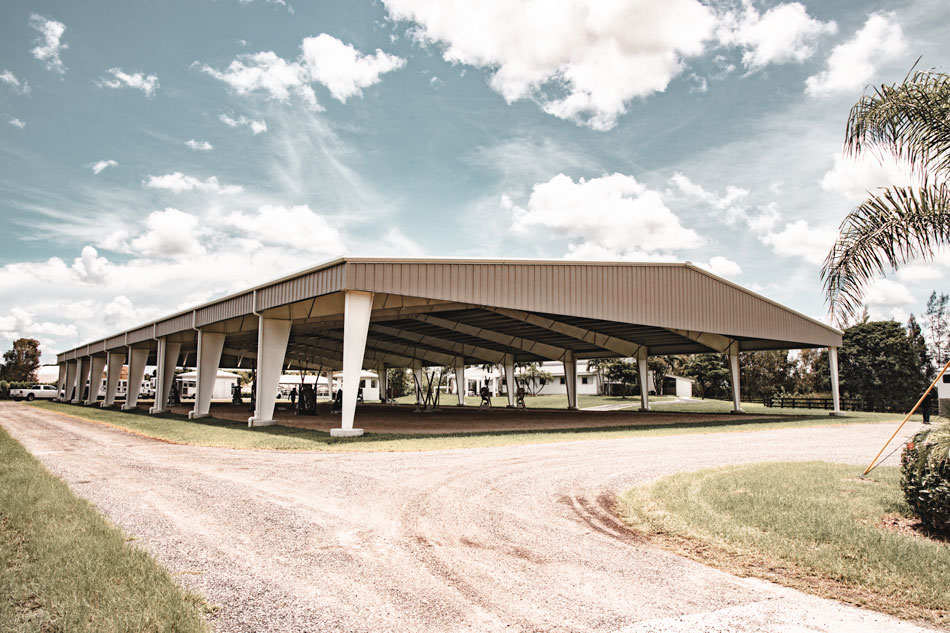
14 Pro Tips for Planning a Steel Indoor Riding Arena

Constructing a steel structure has numerous advantages. Cost, durability, and design flexibility are the top benefits while being perfect venues for horses, riders, enthusiasts, and equestrian events.
Properly designing the structure is essential to ensure the building fits short and long-term plans. Today, we’ll discuss 14 crucial points to implement when building an indoor steel riding area.
Hire a Professional Designer
Although the customer is always right, it’s also necessary to understand when to ask the pros. Even an experienced builder or designer will tell you that it’s beneficial to have another set of eyes looking over plans before finalisation.
In truth, if a person is an actual professional in their field, they’ll likely possess more information, experience, and knowledge to help your project go smoothly. Tap into this information whenever possible, especially if it’s being offered or is part of the construction service.
By hiring a professional arena designer, you’ll have someone considering the logistics of the horses and riders and any spectators or crowds. They’ll advise on the details you want to make each riding experience the best possible.
They’ll also advise where the structure should be placed, the facilities management services and maintenance needed, and the utilities necessary for a top-choice riding facility. Plus, you can plan around a budget more successfully when working with a person or team familiar with wholesale and retail pricing for the structure and materials needed.
Assign a Budget
The budget is one of the first considerations for the construction process. It should be part of the initial conversations with the contractor, the building supply company, and professional project designers.
It’s also essential to revisit the budget from time to time to see how the project is progressing, if there are any areas to amend, and if the original figures are still consistent. Staying on budget during the project often allows for a few extras to be added at the end without destroying the bottom line.
Select an Area with Natural Drainage
Working with an arena designer will help to identify specific aspects of the structure and surrounding land which will impact the structure now and down the road. For instance, choosing the right piece of land which provides natural drainage will significantly improve the longevity of the building and possibly mitigate some maintenance costs.
If possible, observe the land during or following a rainstorm. Look where the water may have pooled or washed out an area from the watershed. Finding a plot of land with good drainage and higher elevation than surrounding areas is usually a safe choice. But, if you’re unsure, consult a professional with experience.
Decide on the Size and Design of the Arena
Knowing the size of the arena is essential for a few reasons. It’s important to consider which footprint best utilises the land. It’s also important to consider if the size will work for the types of events or activities which will happen there.
The riders should be thinking about the arena’s size, and staking out the space before building can help to visualise how much space and what form might work best.
Try setting boundaries and having riders work the space to gauge responses and gather input. See if the area will work as is or if the size should be amended. Ideally, more than a few riders and horses should be able to work comfortably in the arena simultaneously.
Optimise the Arena’s Footprint
Once the arena’s footprint is decided, optimising the area is essential. As you look to maximise every square inch, this may be a great time to consult with a professional.
Creative ideas for both storage and riding areas can improve not only the usable space but the function of the arena, as well. On average, a riding arena is about 80’ wide and 120’ long. Of course, these dimensions will change for different types of riding or training.
Consider as many options, questions, and problems that may arise for the arena, too. How will they be solved? Have a comprehensive plan of action for recurring events and surprises, including possible emergencies, before the structure’s design is finalised.
Decide on a Covered or Enclosed Riding Arena
Choosing a fully enclosed structure vs. a covered arena with some open-air sides is a personal choice and partly a choice based on arena location. For instance, the weather and climate of an area can significantly influence the type of area built.
Cold winters are one of the more significant factors in choosing an enclosed arena. Controlling outside conditions can be more expensive because of the costs associated with larger commercial HVAC systems or large ventilation fans.
Equally, an area with decent weather and climate conditions year-round might be an excellent candidate for an open-air arena. However, the space will somewhat be at the mercy of external conditions.
Access to Natural Light and Ventilation
Another factor to consider for the arena design is ventilation and natural light. Getting the correct airflow is essential for several reasons, including the overall comfort and performance of the horse and rider.
Using sunlight to illuminate space successfully can lower power bills and provide natural warmth in colder months.
Adequate sunlight and airflow also contribute to reducing viruses and other pathogens. It’s also critical for reducing foul odours associated with mould and mildew in hay, dung, or from the horse apples themselves.
Permit Process
All new buildings require a permit. However, the particulars of each state’s permit process will differ. Contacting the local building inspector should be one of the first orders of business before beginning a project.
It’s also important to consult your building contractor about the permit process and their responsibilities. Many contractors handle the permit process separately from the client.
Quality of Materials
Just as picking the style and size of the arena will differ per project, choosing suitable building materials can also come down to personal preference and choice. The biggest mistake most customers make is picking based on price.
If customers limit themselves to sub-par materials to save money, they usually pay MORE in the long run. Between repairs and replacements, lesser-quality materials tend to add more overall cost to the structure.
Choosing a highly durable and long-lasting product like steel offers clients a worry-free product that will perform well for decades. Steel buildings are engineered and designed to be structurally sound and precise in their design so that construction can happen relatively quickly and by the book.
Safety Tips
Ensure the structure has proper ventilation and easily accessible entrances and exits. The structure will be designed with the horse and rider in mind to provide a safe riding space. This is, yet again, an important area to consult with an expert.
Select a Base and Cushion
One of the most critical aspects of the arena for the horses is the footing material and base of the riding surface. The horses need a cover that cushions their hooves and legs and provides firm support.
A base level of clay, covered with smaller granite or limestone gravel for drainage, is a critical flooring level that can make or break an arena. For instance, if the flooring is unstable or becomes too wet, the horses won’t be able to work in the arena safely. If this is the case, the entire base and flooring must be removed and redone.
Determine Which Accessories You Need
Keep in mind the types of machinery and tools required for the riding space upkeep. Will these be kept in the arena or a separate location? Will there be any seating or stands included in the structure, as well?
Know About Various Finance Options
If it’s recognized that the project is exceeding the budget or may be too large to handle alone from the beginning, it may be a good idea to explore financing options. Finding partial help can allow a project to move forward successfully and through completion.
Riding Areas Done Right
Whether looking to build a smaller, personal riding arena or a large commercial riding area, Coastal Steel Structures has you covered. Our experts can meet with clients and design the best steel riding arena for their needs. Contact us today, and let’s build together!
LETS WORK TOGETHER ON YOUR DREAMS!
Are you ready to start your steel building journey? Request a quote today and speak to one of our experienced team members to set you up for success and make your vision a reality!
GET A QUOTE